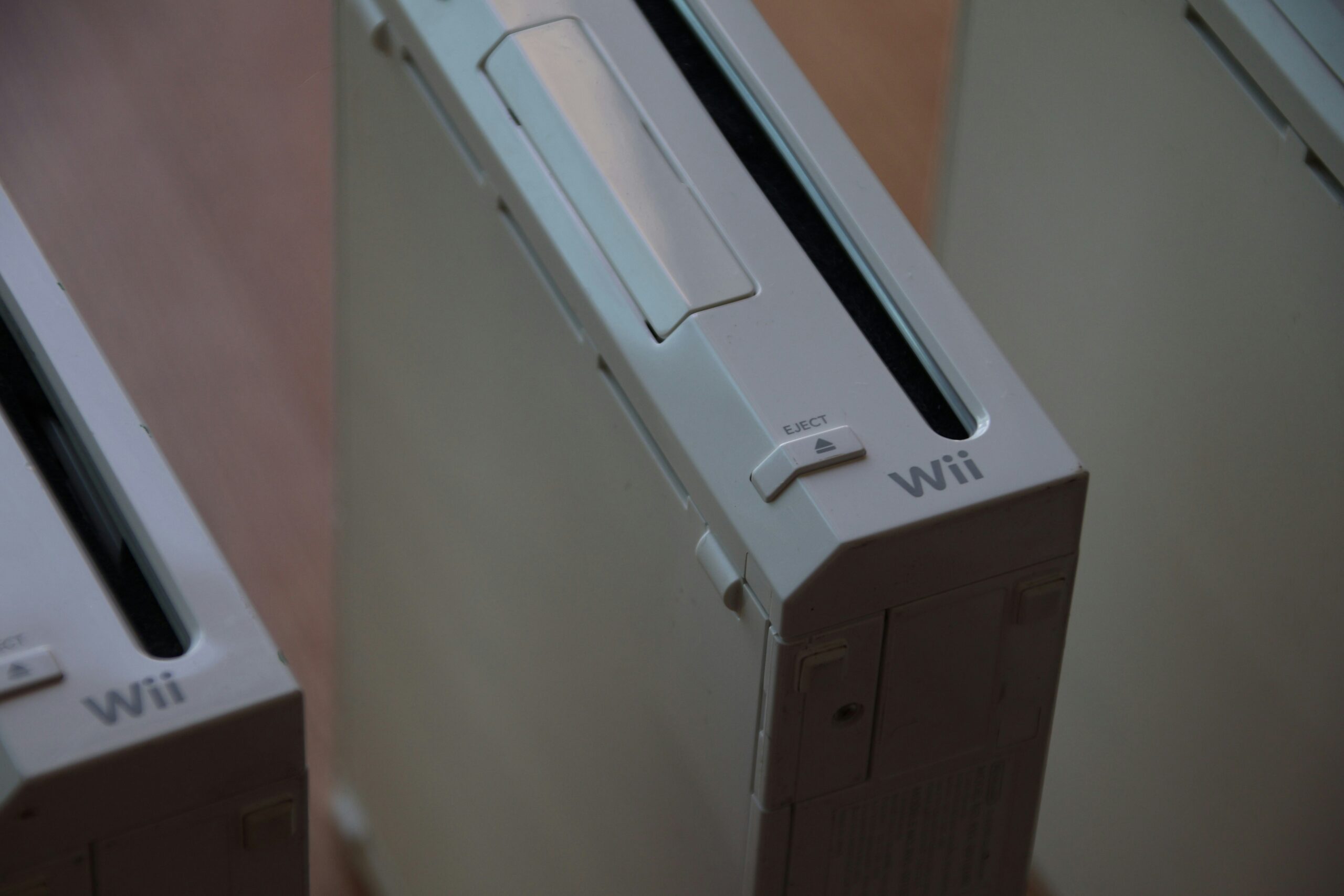In the annals of video game history, few consoles have left as indelible a mark as the Nintendo Wii. Launched by the Japanese gaming titan Nintendo in November 2006, the Wii transcended traditional gaming boundaries, captivating millions of gamers and non-gamers alike across the globe. Its innovative motion-sensing controls, inclusive games, and family-friendly appeal turned it into a phenomenon that reshaped the gaming landscape. This article delves into the multifaceted saga of the Nintendo Wii, exploring its origins, global craze, revolutionary impact, and enduring legacy in the world of interactive entertainment.
The Dawn of Nintendo Wii: Japan’s Brainchild
The Nintendo Wii’s journey began in the creative workshops of Kyoto, Japan, where Nintendo’s visionary team sought to innovate beyond the conventional gamepad. Spearheaded by video game designer Shigeru Miyamoto, the Wii was conceptualized to break the mold of gaming, making it accessible to everyone, not just hardcore gamers. Its development, under the codename "Revolution," was a testament to Nintendo’s ambition to redefine the gaming experience. When unveiled in 2006, the Wii promised a new dawn for gaming, with its motion-sensing technology inviting players to physically engage with games in a way never seen before. The anticipation and intrigue surrounding its launch in Japan set the stage for what was to become a global sensation.
Wii Craze Sweeps the Globe: A Phenomenon Unfolds
Upon its release, the Wii’s novel approach to gaming quickly captured the imaginations of people worldwide. Its global launch was met with unprecedented demand, with retailers struggling to keep shelves stocked. The console’s appeal was universal, captivating not just seasoned gamers, but also families, seniors, and those who had never considered gaming before. The Wii became the centerpiece of social gatherings, transcending cultural and linguistic barriers. Its success was not confined to any one region; from Tokyo to New York, Paris to Sydney, the Wii craze was a unifying global phenomenon.
Revolutionizing Gaming: Wii’s Innovative Controls
At the heart of the Wii’s allure were its groundbreaking motion-sensing controls. The Wii Remote, or "Wiimote," transformed physical movements into on-screen action, allowing players to swing, point, and gesture in a natural and intuitive way. This innovation extended gaming’s reach, making it accessible and enjoyable for people of all ages and abilities. Traditional button-pressing was replaced by the physicality of swinging a tennis racket, bowling a ball, or wielding a sword, blurring the lines between virtual and physical play. The Wii’s controls were not just a technological breakthrough; they were a revolution in how we interact with games.
Breaking Barriers: Wii’s Appeal to All Ages
Nintendo’s Wii demolished the stereotype of gamers as young, male, and dedicated by attracting a broad demographic spectrum. Its simple, motion-driven gameplay and family-oriented titles like Wii Sports and Wii Fit made it a hit among seniors and children alike. Retirement homes and family living rooms became unlikely venues for gaming sessions, as the Wii introduced video games to a whole new audience. Its success lay in its ability to bring people together, irrespective of age or gaming prowess, fostering intergenerational play and bonding through shared experiences.
The Wii Sports Effect: A Cultural Milestone
Wii Sports, bundled with the console in most regions, was pivotal in the Wii’s meteoric rise. This compilation of sports simulations, including tennis, bowling, and golf, was a masterstroke in demonstrating the Wii’s motion controls. It became a cultural phenomenon, a symbol of the Wii’s ability to entertain and engage in a simple, accessible format. Wii Sports parties and tournaments became commonplace, further cementing the Wii’s status as a social gaming pioneer. Its impact was so profound that it influenced public perception of video games, from solitary pastimes to active social events.
Inside the Success: Wii’s Strategic Marketing
Nintendo’s marketing strategy played a crucial role in the Wii’s global success. By positioning the Wii as a console for everyone, Nintendo expanded its target audience beyond the traditional gaming community. Commercials and promotional campaigns emphasized the Wii’s unique family-friendly and social aspects, showcasing people of all ages and backgrounds enjoying the console together. This inclusive marketing approach not only broadened the Wii’s appeal but also challenged prevailing notions of who could be a gamer.
Battling Giants: Wii Versus Xbox and PlayStation
In the competitive arena of console gaming, the Wii stood out by not directly confronting its high-powered rivals, Microsoft’s Xbox 360 and Sony’s PlayStation 3. Instead of focusing on high-definition graphics and complex gameplay, the Wii carved out its unique niche with its innovative controls and broad appeal. This strategic divergence paid off, with the Wii outselling its competitors and dominating the gaming market. Its success demonstrated that accessibility and fun could triumph over technical superiority, reshaping the console wars.
Beyond Gaming: Wii’s Contributions to Fitness
The Wii made significant inroads into health and fitness, largely thanks to Wii Fit and its balance board accessory. These applications transformed the console into a personal fitness trainer, offering a range of activities from yoga to aerobics, all while tracking progress and providing feedback. The Wii’s foray into fitness attracted a new demographic to gaming, further blurring the lines between physical activity and interactive entertainment. It demonstrated the potential of video games to contribute positively to personal well-being, a legacy that continues in the fitness gaming genre today.
The Legacy Continues: Wii’s Influence on Gaming
The Nintendo Wii’s influence on the gaming industry is undeniable. It pioneered a shift towards motion-controlled gaming, inspiring competitors and developers to explore new ways of interacting with games. The Wii’s legacy is evident in the continued development of motion-sensing technology and the enduring popularity of casual and family-oriented gaming. It pushed the boundaries of what a gaming console could be, leaving a lasting impact on how games are designed, played, and perceived.
Chart-Topping Sales: Wii’s Record-Breaking Journey
The Wii’s commercial success is highlighted by its extraordinary sales figures. With over 100 million units sold worldwide, it stands as one of the best-selling consoles of all time. Its ability to attract a diverse audience, from seasoned gamers to families and seniors, propelled it to unprecedented heights. The Wii’s sales not only underscored its widespread appeal but also cemented its place in gaming history as a cultural and commercial phenomenon.
From Japan to the World: Wii’s Global Impact
The Nintendo Wii’s journey from a Japanese innovation to a global sensation encapsulates the universal appeal of interactive entertainment. It broke down barriers, challenged stereotypes, and brought people together, leaving an indelible mark on cultures around the world. The Wii’s success story is a testament to the power of innovation, inclusivity, and the universal language of fun, demonstrating how a simple idea from Japan can captivate the global imagination.
Looking Ahead: The Wii’s Enduring Legacy in Gaming
As the gaming industry continues to evolve, the Nintendo Wii’s legacy endures. Its impact on game design, player interaction, and the broadening of the gaming audience remains a benchmark for innovation. The Wii’s philosophy of accessibility and fun continues to inspire, reminding us that at the heart of gaming is the joy of play. As we look ahead, the Wii stands as a beacon of creativity and inclusivity, shaping the future of gaming for generations to come.
The Nintendo Wii’s story is one of groundbreaking innovation, global unity, and enduring legacy. From its origins in Japan to its status as a worldwide phenomenon, the Wii redefined what a gaming console could be and who it could entertain. Its revolutionary controls, inclusive appeal, and contributions to fitness and well-being have left an indelible mark on the gaming landscape. As the industry moves forward, the Wii serves as a reminder of the transformative power of gaming and the endless possibilities that await when we dare to innovate and include. The Nintendo Wii, a true global sensation from Japan, continues to inspire and entertain, proving that the spirit of play knows no bounds.








